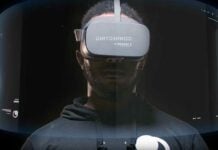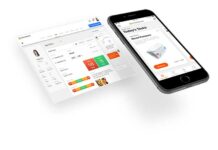Like every autumn WT | Wearable Technologies dives deeper into the topic of healthcare. For the sixth consecutive year we are happy to present the latest trends at MEDICA in Dusseldorf on November 16-19, the worldwide leading trade show in the medical sector, at our joint booth in hall 15 A23.
We are happy to welcome Qardio at our joint booth this year. The company will present its clinically-validated devices which are not only extremely accurate but also designed to blend into everyday life. Marco Peluso, CEO at Qardio, took a few minutes to answer some questions about their products and some developments in the healthcare market.
1. More and more wearable tech companies from the lifestyle market try to enter the healthcare market. Not all of them are successful. What do you think makes the difference and is important to be accepted as a “medical” product?
This is a very important point. It is quite difficult for lifestyle products to provide value for healthcare applications. It is for this very reason we at Qardio specifically focus on designing and manufacturing medical devices. So our products have a clear and inequivocable set of medical applications in a healthcare context.
We believe there are two important features users like to see in their medical wearable product: medical grade accuracy and actionable feedback. The medical device user has much higher expectations from his “medical” device then from his “lifestyle” wearable as, in many cases, his life depends on it. Creating a devices people find easy to use, beautiful to look at and with data they are important to them and can act on, those are the qualities we thought important and are incorporated in all Qardio device ecosystem.
2. Qardio has not only created wearable devices that are accurate, but also beautifully designed. How important do you think design is for medical products? Do you see a change in the healthcare market?
Yes, design is very important to us. Our users are mainly people with chronic conditions, which means they need to use our devices daily. If you have to carry around a monitoring device, wouldn’t you want to have something beautiful and easy to incorporate into your lifestyle? Medical device sector is perhaps the last frontier that hasn’t caught up on the design and technology advancements other industries have seen. Most products on the market are based on design and technologies from last century. We hope to drive change in the industry and see more and more players adopting the same philosophy and technologies that we have, but I am afraid it’s going to take maybe 10 years…
3. Whom do you have in mind when you design a product? What is your target group?
Today, one in three adults is living with chronic condition yet they have very limited options when it comes to management and prevention of such conditions, especially if design and user experience is important. Our typical user is someone in need of clinically validated and medically accurate devices that are also compatible with the modern lifestyle and don’t compromise on design and useful features. The world of technologies has been through such an extraordinary advancement in the past decade. It has been our mission to bring the healthcare industry up to speed and create smart, modern device user would actually love to use and have around.
4. Can you already reveal which products you are planning to create in the future?
We don’t really want to spoil the surprise, but I can say we are really excited about what we have coming up.
5. What is your favorite wearable besides your own (and why)?
The smartphone. Let’s not forget that the value of wearables is not in the wearability itself, but in their pervasiveness, and their ability to make sensors and interfaces approachable, usable, and easy. Today’s smartphone, while not strictly wearable in its’ form-factor, really fulfills all of those elements of the wearable utility and function.
If you are interested in more detailed information, do not hesitate to drop by at our booth in hall 15, A23 at MEDICA.















